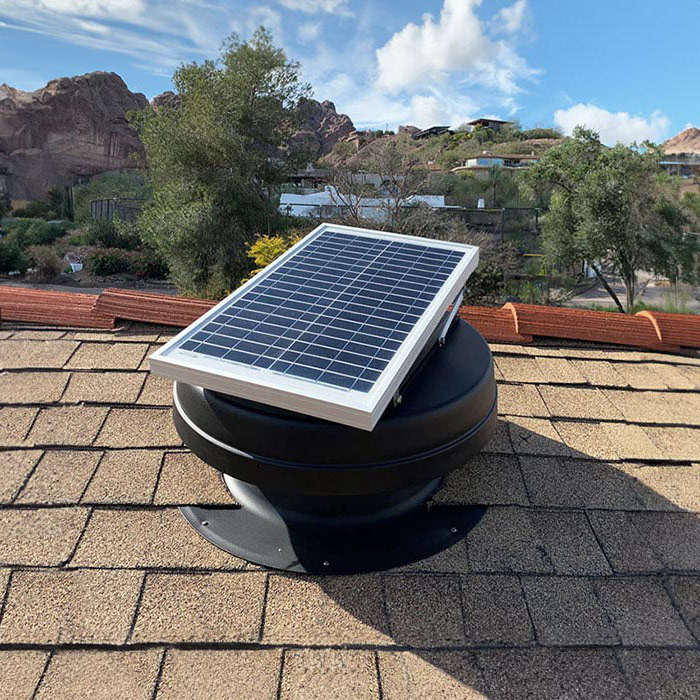Here’s the 2025 pricing landscape for solar tubes (also called sun tunnels or tubular skylights), based on multiple up-to-date sources:
💸 Typical Installed Costs in 2025
-
Average total cost: $600 to $1,100 per tube, with most homeowners paying around $850 for professional installation Reddit+12Elite Home Daylighting Systems+12GoGreen Daylight Systems, LLC+12.
-
Material costs: $200–$500 per tube, depending on brand, size, and model Elite Home Daylighting Systems+1GoGreen Daylight Systems, LLC+1.
-
Labor costs: Typically $150–$250 per tube; complex installations or non‑asphalt roofs may add $50–$150 in adapter or labor fees Elite Solar Systems, Inc.+1Elite Home Daylighting Systems+1.
📐 Cost by Tube Size
| Tube Diameter | Material Cost | Typical Installed Cost |
|---|---|---|
| 10″ | $150 – $300 | $600 – $850 |
| 14″ | $350 – $550 | $700 – $1,000 |
| 18″ and above | $600 – $750+ | $800 – $1,100+ |
Larger diameters offer more light and higher coverage but come at increased material and labor cost Reddit+12smartpowr.com+12Elite Solar Systems, Inc.+12Reddit+12Angi+12Elite Solar Systems, Inc.+12Reddit+2Reddit+2Reddit+2.
⚠️ Additional Cost Factors
-
Roof type: Tile, metal, or wood roofing often requires special flashing adapters ($70–150), which may increase labor cost Elite Solar Systems, Inc.+3Angi+3Elite Home Daylighting Systems+3.
-
Installation complexity: Long tube runs, vaulted ceilings, or navigating around attic obstructions may raise costs.
-
Condensation control (humid climates): Adding insulation (e.g. R‑15/R‑19) may cost extra ($50–100) Angi+5smartpowr.com+5Elite Home Daylighting Systems+5Elite Solar Systems, Inc.+1Angi+1.
-
Optional add-ons:
-
Integrated LED night-light: +$50–$200
-
Dimmers or solar dimmer: +$50–$150 to +$300–$400 depending on model
-
Vent kits or upgraded diffusers: $75–$350 Reddit+13smartpowr.com+13Solatube Home+13Elite Solar Systems, Inc.+14Elite Solar Systems, Inc.+14GoGreen Daylight Systems, LLC+14Elite Home Daylighting Systems+2GoGreen Daylight Systems, LLC+2Reddit+2.
-
🛠 DIY vs Professional Installation
-
DIY kits generally cost $300–$600, though you may need extra tools or flashing kits, bringing $$ to $600–$900 total Elite Solar Systems, Inc.+1GoGreen Daylight Systems, LLC+1.
-
Professional installation is usually preferred to ensure proper weatherproofing, avoid leaks, and maintain roof warranty Reddit+8Elite Home Daylighting Systems+8Elite Solar Systems, Inc.+8.
💡 Comparison with Skylights
-
Solar tubes are 60–80% less expensive than traditional skylights, which typically range from $1,600 to $4,200 installed Reddit+13HomeGuide+13GoGreen Daylight Systems, LLC+13.
-
Solar tubes deliver diffused daylight without UV or heat gain—ideal for lighting without impacting room temperature or view.
✅ Summary
-
Installed cost per tube (2025 average): $600–$1,100 (≈ $850 typical)
-
Material only: $200–$500
-
Add‑on upgrades: +$50–$500 depending on options
Arizona-specific note (Phoenix and East Valley): Local installers like GoGreen Daylight Systems and Elite Home Daylighting report similar pricing ranges, often around $800–$1,200 per tube, with local labor rates and roof types factored in smartpowr.com+3GoGreen Daylight Systems, LLC+3GoGreen Daylight Systems, LLC+3Angi+2Elite Home Daylighting Systems+2GoGreen Daylight Systems, LLC+2.
🧠 Planning Tips
-
Consider starting with one 10″ or 14″ tube for smaller spaces; larger tubes are better for bigger rooms.
-
Get quotes from multiple local installers—especially those experienced with Phoenix roofing (e.g., tile, metal).
-
Ask about bundled pricing if installing multiple units—some installers offer discounts per tube.
-
Discuss optional upgrades like dimmers or LED night lights if you want use at night.
-
Research tax incentives: solar-powered units may qualify for the federal renewable energy credit (up to 30%), though tax rules can change—confirm eligibility before claiming AngiReddit.
To assess how many solar tubes (sun tunnels) you need for your space, you’ll want to match the tube size and quantity to the room size and lighting needs. Here’s a breakdown to help you plan accurately:
📐 Step 1: Measure the Room
-
Room dimensions: Multiply length × width to get square footage (sq ft).
-
Example: 10 ft × 12 ft = 120 sq ft
💡 Step 2: Match Tube Size to Room Size
| Tube Diameter | Light Coverage | Room Examples |
|---|---|---|
| 10-inch | ~150 sq ft | Hallways, bathrooms, closets |
| 14-inch | ~200–300 sq ft | Bedrooms, kitchens, laundry rooms |
| 18-inch | ~350–500 sq ft | Living rooms, great rooms, garages |
-
These are approximate daylight coverage estimates for clear, sunny days.
-
For cloudy regions, use the higher diameter or more tubes.
🔢 Step 3: Determine Quantity Needed
Here’s a quick reference chart:
| Room Size | 10″ Tubes Needed | 14″ Tubes Needed | 18″ Tubes Needed |
|---|---|---|---|
| Up to 100 sq ft | 1 | — | — |
| 150–200 sq ft | 1–2 | 1 | — |
| 250–300 sq ft | 2 | 1 | — |
| 350–500 sq ft | 2–3 | 1–2 | 1 |
| 600+ sq ft | 3–4 | 2–3 | 2 |
✅ Tip: If you want even light distribution in larger or oddly shaped rooms, multiple smaller tubes may work better than one large one.
☀️ Additional Considerations
-
Roof access: If the attic space is blocked or complex, you might be limited in where tubes can go.
-
Tube length: Longer runs (over 8–10 ft) reduce light output unless you upgrade to a reflective rigid tube.
-
Climate: In Arizona, high sunlight ensures strong performance, but roof heat may require insulated tubes to prevent condensation.
-
Aesthetics: For symmetry or design balance, two 10″ tubes may look better than one 14″ in some rooms.
🛠 Example Scenarios
🔹 Bathroom (80 sq ft)
-
1 × 10″ tube (perfect fit)
🔹 Kitchen (220 sq ft)
-
Option 1: 1 × 14″ tube
-
Option 2: 2 × 10″ tubes for better distribution over cooking and prep areas
🔹 Living Room (450 sq ft)
-
Option 1: 2 × 14″ tubes
-
Option 2: 1 × 18″ tube (if centralized)
Elite Solar Lighting & Fans Is A Solar Tube Installer Located In Arizona
Elite Solar Lighting & Fans offers residential and commercial solar tube installation services throughout the entire united states, including Arizona, California, New Mexico, and more.






